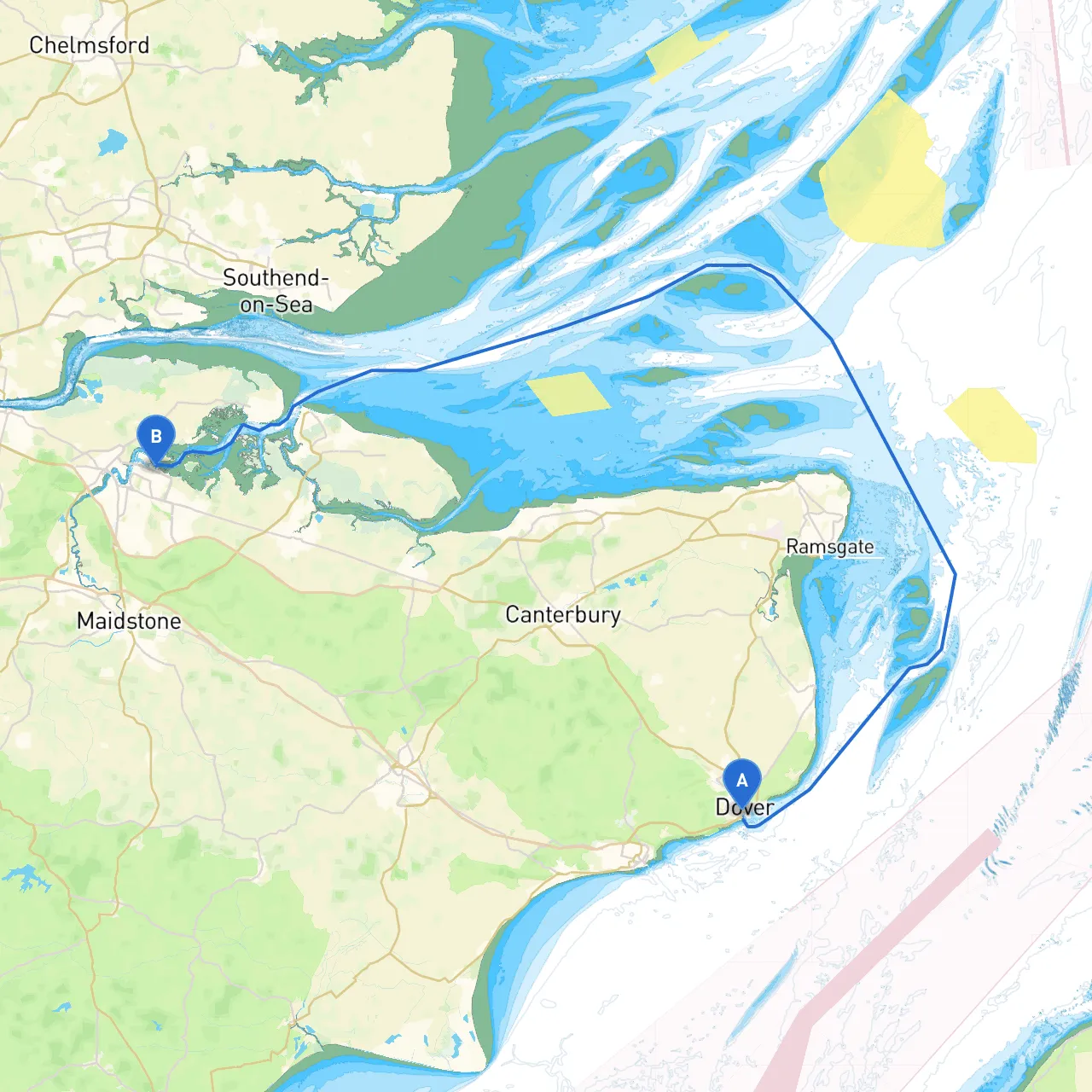Pilotage Plan: Dover, GB to Gillingham, GB
Embarking on a journey from Dover to Gillingham offers a blend of stunning coastal scenery, historical landmarks, and accessible shelter points should the weather change. This trip is suitable for seasoned boaters and those looking for a delightful escapade on the water. Whether you're sailing on a sailboat or cruising on a motor yacht, this passage will provide unique experiences worthy of exploration while prioritizing safety and navigation.
Route Overview
The distance between Dover and Gillingham is approximately 43 nautical miles, taking you through the scenic waters of the English Channel and the Medway River. This route requires careful navigation through busy shipping lanes, tidal considerations, and weather monitoring.
Route Sections
1. Departure from Dover
- Starting Point: Dover (Lat: 51.1192, Long: 1.3108)
- Key Hazards: As you depart from Dover, pay attention to the busy traffic coming in and out of the Port of Dover. The harbor entrance is exposed to tidal flows, and careful navigation is essential.
- Notable Landmarks: The iconic White Cliffs of Dover provide a breathtaking backdrop as you navigate away from the harbor.
2. Towards the Goodwin Sands
- Navigation Aids: The North Foreland Light and the Goodwin Sands mark the next section. Use charts and GPS to maintain safe passage, as the sands are notorious for their shifting nature and can be treacherous in poor visibility.
- Points of Interest: This area is rich in maritime history, with opportunities to spot wrecks off the sands if you have dive gear or just enjoy the stories of those lost at sea.
3. Entering the Thames Estuary
- Crucial Waypoints: Rounding Kentish Knock into the Thames Estuary requires watching for the busy shipping traffic. The Thames Port Control is vital in guiding larger vessels, but your small craft also needs to stay alert to their movements.
- Shelter Opportunities: If conditions worsen, consider diverting to Ramsgate or Margate. Both offer excellent marina facilities and shelter from inclement weather.
4. Medway River
- As you approach Gillingham, you will have to navigate the Medway River entrance. Look for the buoys marking the channel, and avoid shallow areas.
- This section presents a more tranquil stretch where you can appreciate the switch from bustling maritime traffic to rural scenery along the riverbanks.
Points of Interest and Safe Havens
- Ramsgate: A perfect stop for a break, with shops, dining, and an active marina. It's an ideal place to refuel if needed before heading further.
- Chatham Maritime: Before reaching Gillingham, you’ll pass close to Chatham's historical dockyard — a wealth of naval heritage to explore.
- Sailing Clubs and Marinas: Speak to locals at the various marinas along your route; they can provide updates on conditions and advice for safe passage.
Safety and Navigation Considerations
1. Weather Monitoring: Always prepare a weather briefing before departure, using services like the UK Met Office as well as marine apps, including Savvy Navvy. 2. Tidal Awareness: Familiarize yourself with the tidal patterns of the Thames Estuary; they can significantly affect your approach to Gillingham.3. Traffic Awareness: Remain vigilant in shipping lanes, communication with nearby vessels can often be facilitated through VHF radios.4. Regulatory Compliance: Be aware of and adhere to local regulations, especially concerning environmental protection areas in the Medway.
Conclusion
This route from Dover to Gillingham not only provides an enjoyable day of cruising, but also offers many safe havens and sights along the way. With proper preparation, heightened awareness of the various navigational challenges, and a focus on safety, this boating journey can be both memorable and rewarding. Happy sailing!

